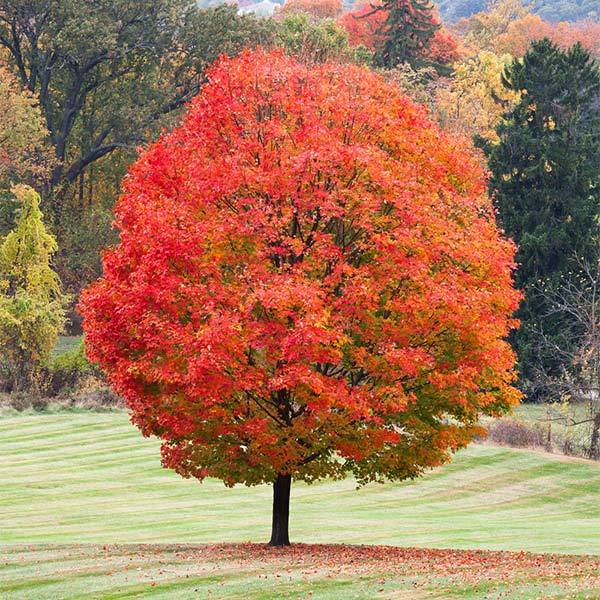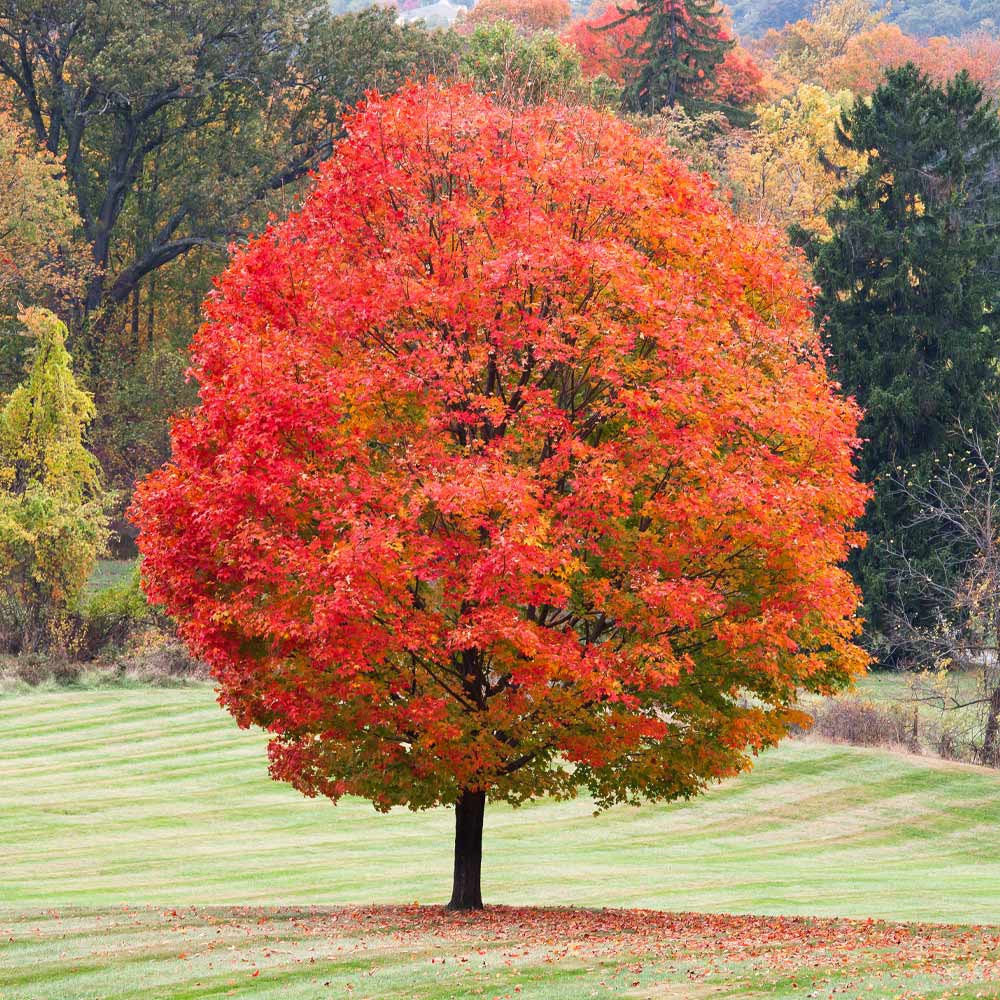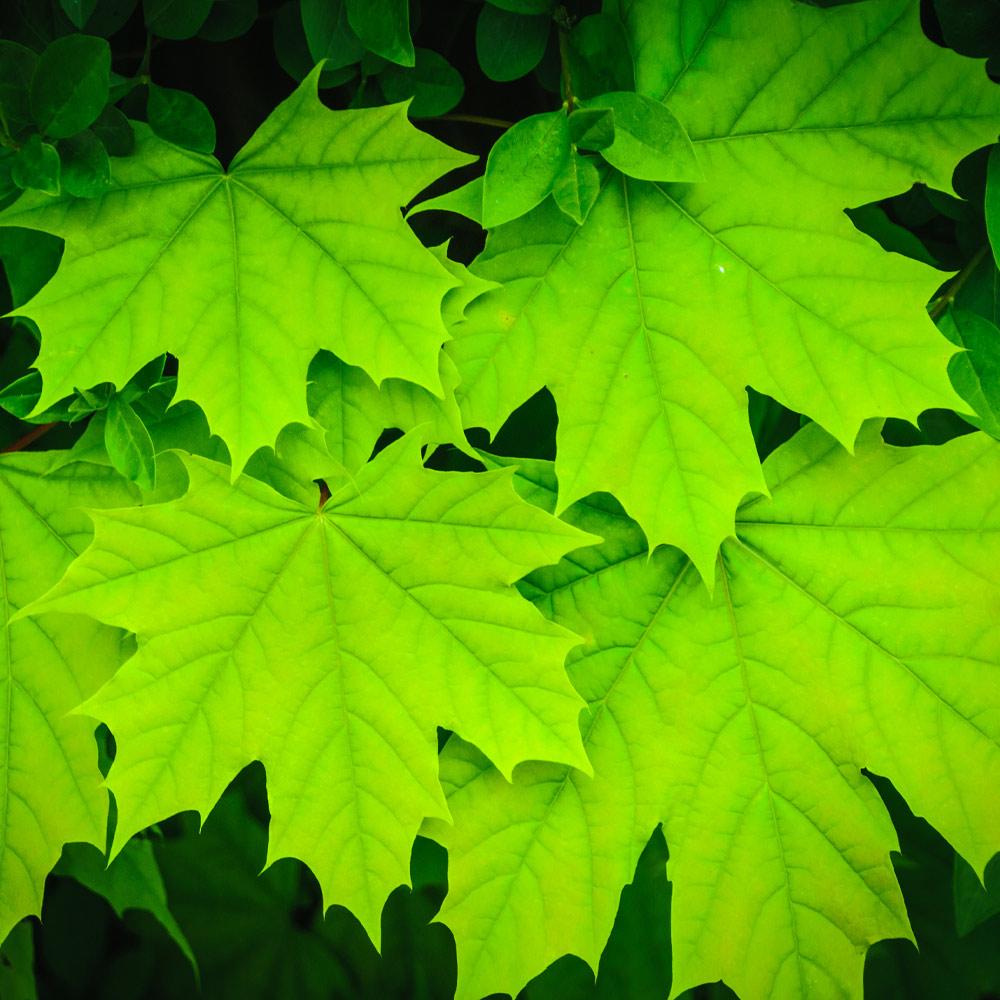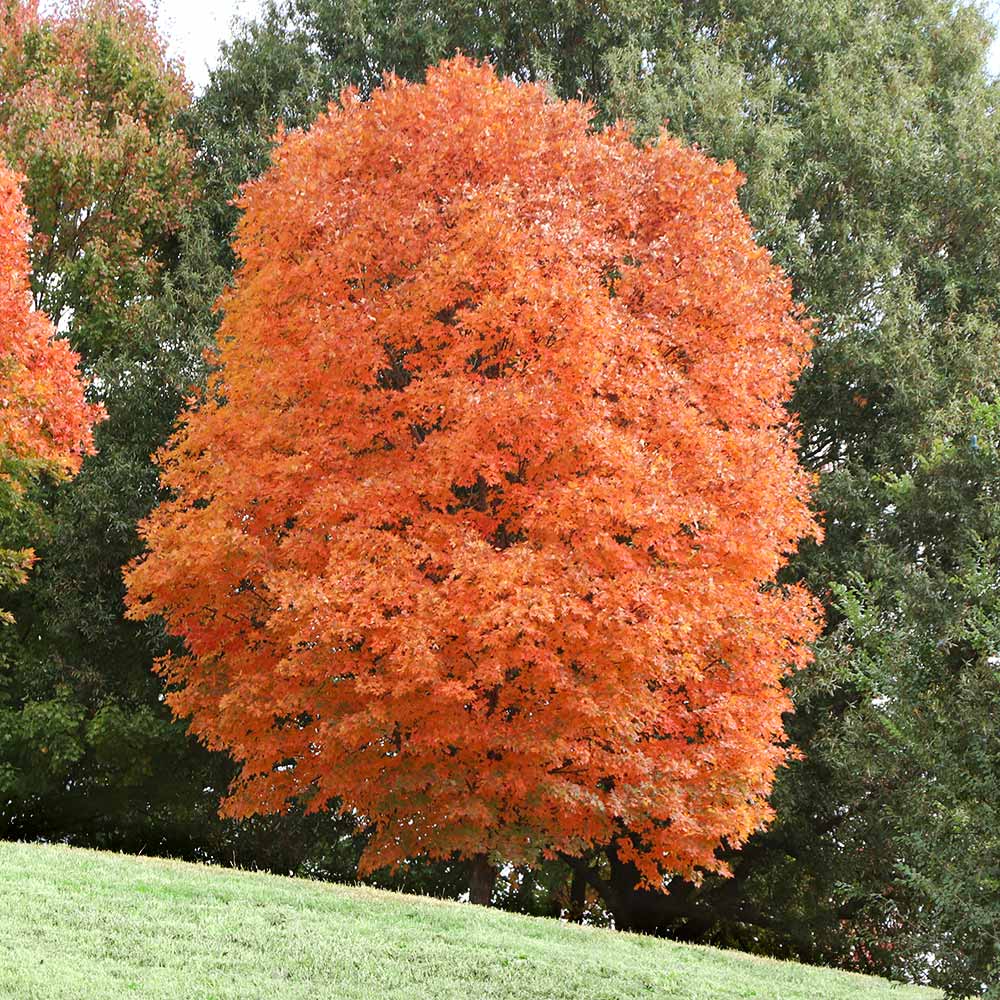Sweet Addition to Any Landscape
Why Sugar Maple Trees?
Beauty, charm and strength - the Sugar Maple is a hardwood that embodies it all. Rising to large heights, the Sugar Maple expands its grace, spreading out its incomparable leaves. It's no wonder New York and Vermont have both adopted it as their state trees and Canada has adorned its national flag with the Sugar Maple's incredible leaf.
Plus, you get a show of color like no other. In fact, its autumn foliage stands out above all others in the landscape. That's when the substantial green leaves morph to rich golds, bright yellows, then a burnt orange so vivid it almost glows. The show of color ends with an unmatched deep red that will keep you looking forward to next fall.
Why Fast-Growing-Trees.com is Better
With a gorgeous array of brilliant colors, Sugar Maples make an exceptional roadside tree. But the best part of our Sugar Maple is that we've planted, grown and nurtured it long before shipping. Now, you reap the rewards of our hard work at the nursery with better long-term results in your own landscape.
You won't get the same benefits from big box stores or other nurseries. And we're here to help every step of the way...so, don't wait - get your Sugar Maple Tree today!
Planting & Care
1. Planting: Tolerant of soggy soils, Sugar Maples grow nicely in any fertile soil but prefer well-draining soil. And once established, it tolerates droughts with little harm although infrequent, deep irrigation will help retain more foliage in extremely dry periods, especially in regions with hot summers.
Select a spot where the tree is in full to partial sun exposure (4 to 8 hours of sunlight per day), and dig a hole for the Maple that’s 2 to 3 times the width of your tree’s root ball and equal depth. Place your tree in the planting hole, keeping the top of the root ball even with the ground. Fill a small amount of the soil into the hole to maintain the tree’s upright position and water thoroughly. Once the water has absorbed into the root ball and surrounding soil, fill the remaining soil into the planting hole. Pack firmly and water a second time.
Finally, mulch to retain soil moisture and keep competing growth away from the planting site.
2. Watering: During its formative years, your Maple will require weekly watering, and as it matures, your tree will still need plenty of water during the summer months. Be sure to water correctly - light green leaves are a sign of over-watering, while drooping leaves signify both over-watering and under-watering.
3. Fertilizing: During the first growing season, use only slow-release fertilizer tablets on your new maple. Any 10-10-10 fertilizer will be suitable. Fertilize your maple twice a month when it is coming out of dormancy and once a month during the summer. Discontinue before the tree returns to its dormant state.
4. Pruning: Prune maple trees during winter or early spring before bud break, when they are fully dormant. This helps minimize stress on the tree and reduces the risk of disease transmission. Maples can bleed sap heavily if pruned during the growing season (spring and summer). Remove dead or broken branches first. Next, thin out the canopy to allow for better light and air circulation.








Comment